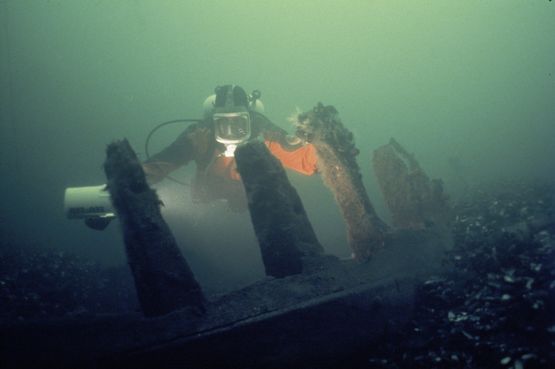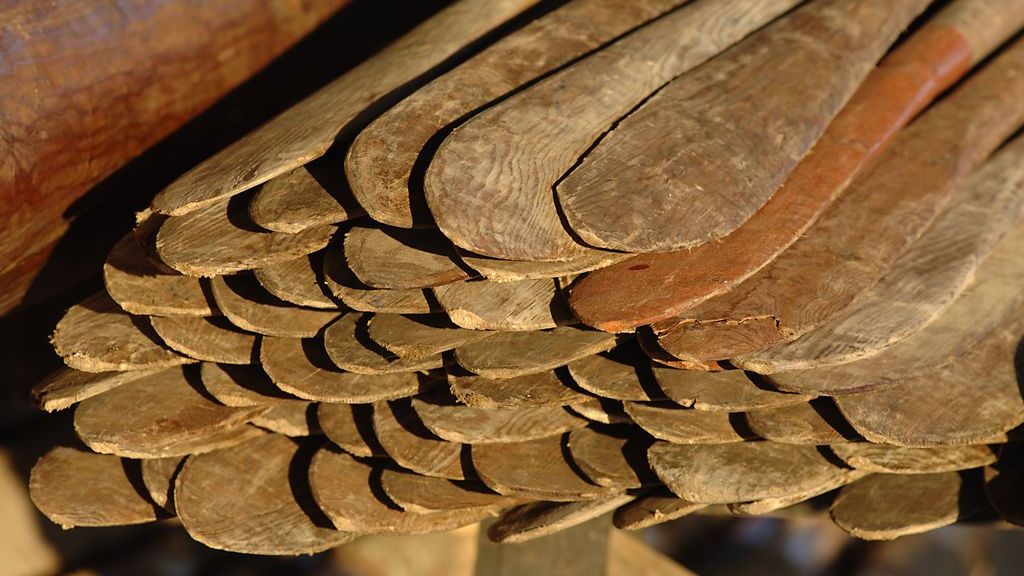Attack from the small molluscs, shipworms, is an increasing problem in Danish harbours. There are up to 100,000 well-preserved ship wrecks and historic collections of wood on the Baltic seabed. Until now, they have been protected against the aggressive shipworm due to the water’s low salt content, but it seems that the worm is now spreading in the area, possibly due to climate change. A project, Wreck Protect, financed by the European Commission, will now study the increasing numbers of shipworms in the Baltic and draw up measures to protect the underwater cultural heritage.
Unique and well-preserved collection on the seabed endangered
We can ask ourselves whether we should worry about the wood-eating
worms, since the shipwrecks are under water anyway? Yes, we should! The
Baltic is one of the few places in the world where historic shipwrecks
can be found intact and accessible for historical research under water.
Now there are indications that this will not continue unless action is
The shipworm must be combated
Until now, the low salt content of the water has protected the
shipwrecks from the shipworm but now the worm has begun to spread
throughout the area. Unless the underwater cultural heritage is
physically protected, it will be eaten by the worms in a relatively
short period of time. The strategy to avoid this frightening scenario is
to give museums and conservators responsibility for the long-term
preservation of the cultural heritage in the form of tools to predict
the spread of the shipworm and cost-effective means of preserving the
sites before they are lost. The European Commission is now helping with
this task.
A team of experts join forces against the worm
Wreck Protect is financed under the European Commission’s seventh
framework programme to produce effective tools to predict potentially
exposed areas of the Baltic, and also to draw up guidelines for
preservation of the shipwrecks.
The project, which began 1 May 2009 and will last 2 years, includes
marine archaeologists, biologists, archaeological conservators, wood
scientists and specialists in Geographical Information Systems (GIS) and
modelling of the marine environment from Denmark, Sweden, Holland,
Finland, France and Germany. The experts from the various countries will
use methods and networks to exchange knowledge and then combine it into
practical tools and methods. The purpose of Wreck Protect is to predioct
the spread of the shipworm in and around tha Baltic and to find
cost-effective means of protecting the underwater culturall heritage so
that it can be protected and secured for the future.
Facts
Shipworms are a group of very aggressive, marine destructive molluscs
that can usually destroy wood-based material exposed to seawater within
a very short period of a few years or even months. However, the worms
require a relatively high salt concentration to remain active. Until
now, the low levels of salt in the Baltic have acted as natural
protection for the underwater cultural heritage for centuries. Until
now, the destruction of shipwrecks in the Baltic has only been caused by
microorganisms, fungus and bacteria. These processes are very slow and
far less destructive.



